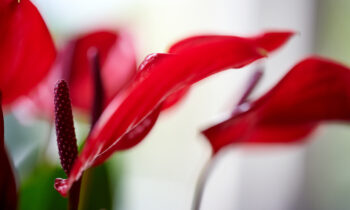Since insecticides that are effective against potworm are no longer available in phalaenopsis cultivation in Holland, controlling the problem of the damage of the larvae of Lyprauta has been challenging, to say the least.
None of the authorized insecticides available are effective enough to make a difference. Nor are there any biological alternatives. The efficacy of the predatory mites Machrochelis, Hypoaspis and the predatory beetle Atheta has not been proven good enough either.
Prevention is then really the only thing left. This can be done with cultivation measures and with solutions that are becoming more common in cultivation: covering the plants.
Cultivation measures
Pouring strategy
From the very beginning just after potting, the eggs are deposited in the substrate. This is something to bear in mind: often, the plants are well wetted at this stage and kept moist: something mosquitoes like and which increases the success rate of egg deposition! So, this is where the first battle can be struck. Be extremely cautious about watering in the first 10-14 days after potting. For example, by wetting the plugs well before potting, the substrate can be kept dry much easier after potting. In the later phase, it is important to water with a large amount of water so that the plugs are well soaked and then wait a long time before watering again.
Pot and substrate system
It is good to realize that on one side, the potworm benefits from a substrate that stays moist for a long time, in which it can develop well. On the other hand, it benefits from a substrate that requires frequent pouring. The success rate of egg deposition is increased with the latter. Especially in the preliminary stages of cultivation, this plays a role. When choosing substrate and pots, it is therefore important to estimate how quickly the substrate will dry out in the pot and how quickly pouring is required. As a rule, it can be said that when the average pouring frequency is at 4 or fewer days or 8 or more days, problems with potworm are increasing.
Creating physical barriers
Gazing off
Since the end of 2021, the first growers in Holland have started “gazing off” the newly potted plants. This involves laying nylon netting on the mesh floor, on which the potted plants are placed and then a cloth of the same fabric is stretched over the plants. This way, it is almost impossible for the Lyprauta mosquitoes to deposit eggs in the substrate. Most eggs remain on the netting and dry out right away, those that do fall through the netting also dry out in most cases.
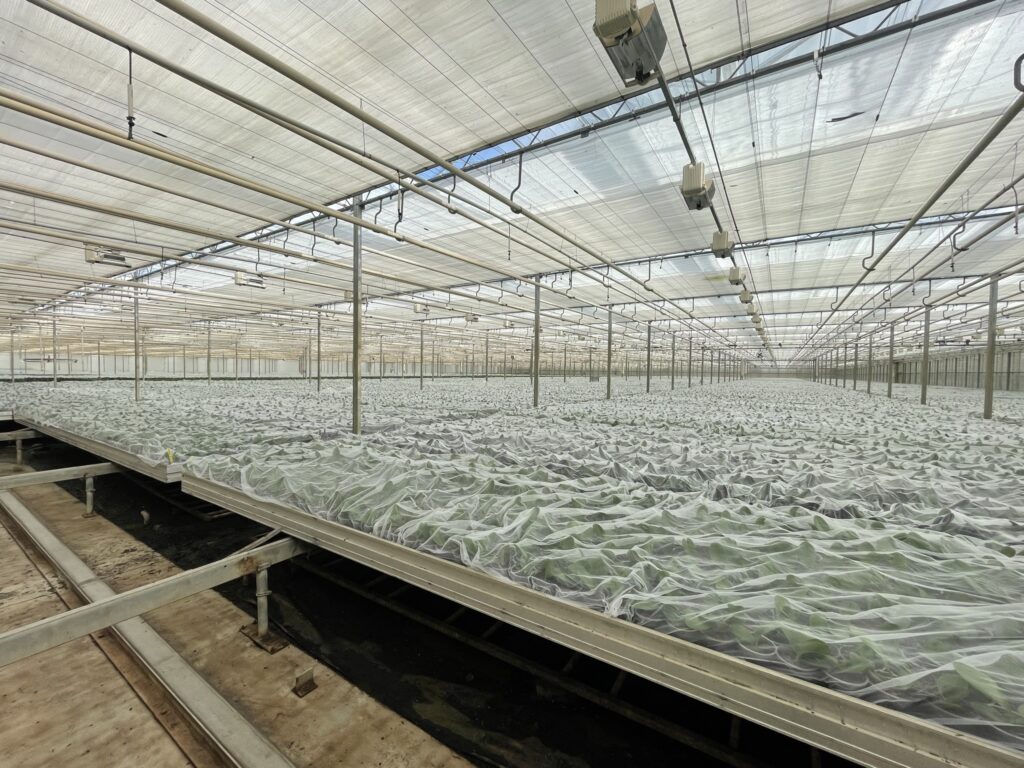
Gazing off
Potweb
The growers Levoplant, Ter Laak and Opti-Flor together with Solvent Engineering (manufacturer of, among others, the automatic phalaenopsis potting machine) have developed another solution; a kind of pantyhose that is pulled around the pot, the “potweb”. The advantage is that it covers the pot with the substrate, without covering the plant itself and subsequently no light is taken away. This is an important fact, as the mesh used in “conventional covering” takes away 10-15% light. Another advantage is that scouting for diseases and pests is no longer hampered. An additional advantage is that bark can no longer fall out of the pot during cultivation, processing, or trade. This initiative recently won the Greenovation Award.
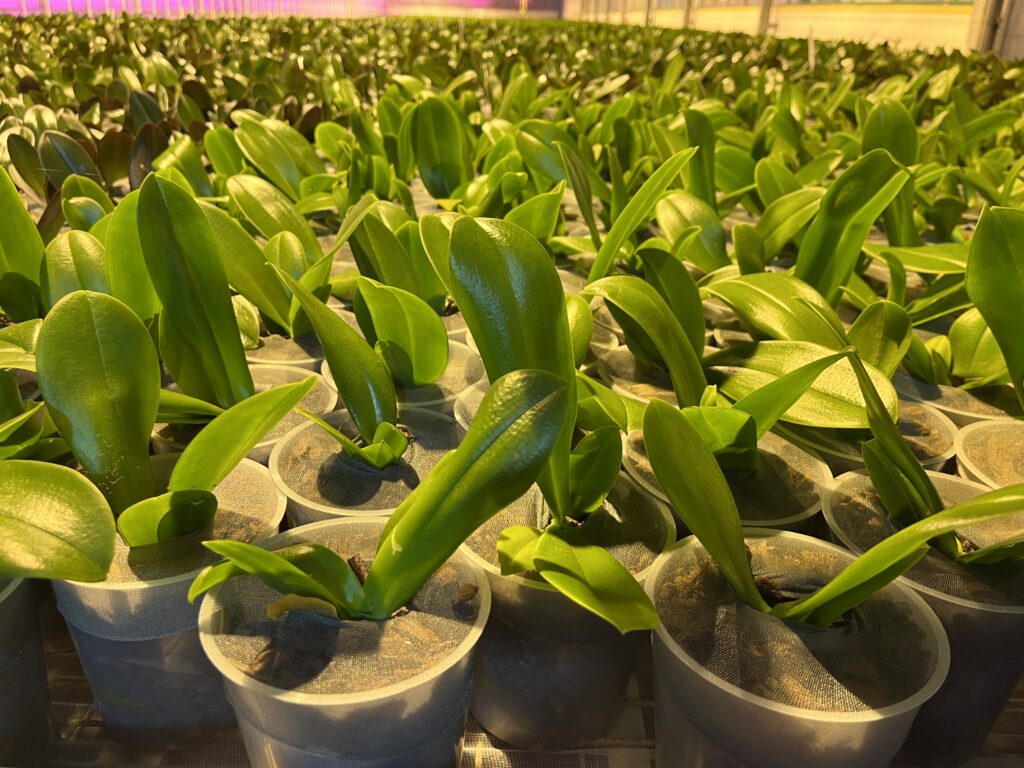
Potweb
Tent
Two years ago, a tent was started to be built in the greenhouse in the Anthura’s breeding department with a width of a canopy (12.80 m). The material used to make the tent is like the netting now used for screening. The concept is the same: to keep the mosquitoes away from the plants so that no egg deposit can take place in the pots. This worked out well and can be said to be a successful way of preventing potworm without any form of specific control. As in the case of off-gassing, the number of mosquitoes counted in the tent in the catchlights is not 0, but there is hardly any to no eating of the roots for a long time (>1 year). The tent is about two meters high, so you can walk in it. Furthermore, the tent is ±50 meters long: a canopy is thus divided in two. The lighting and rain pipe are situated above the tent; nothing was changed during construction. Before commissioning, the tents were thoroughly cleaned. Then only freshly potted plants were put in. The plants spend a total of between 16 and 18 weeks in the tent. It is important to start completely clean!
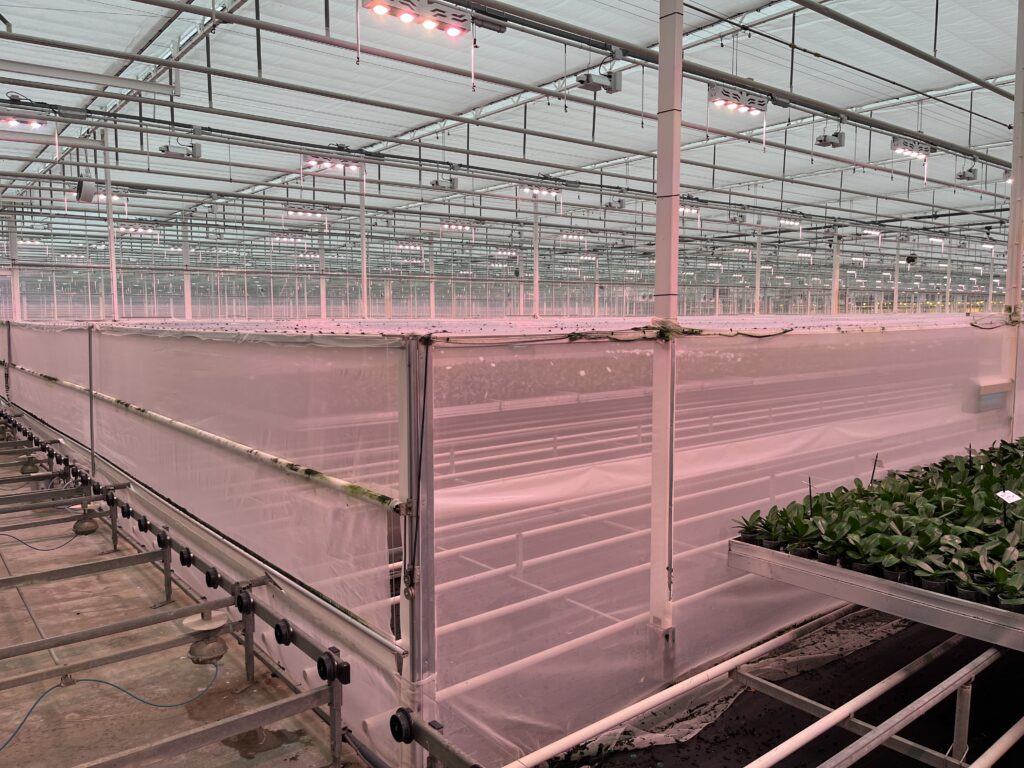
Tent
So, with the above measures, growers are most likely to remain free from potworm.
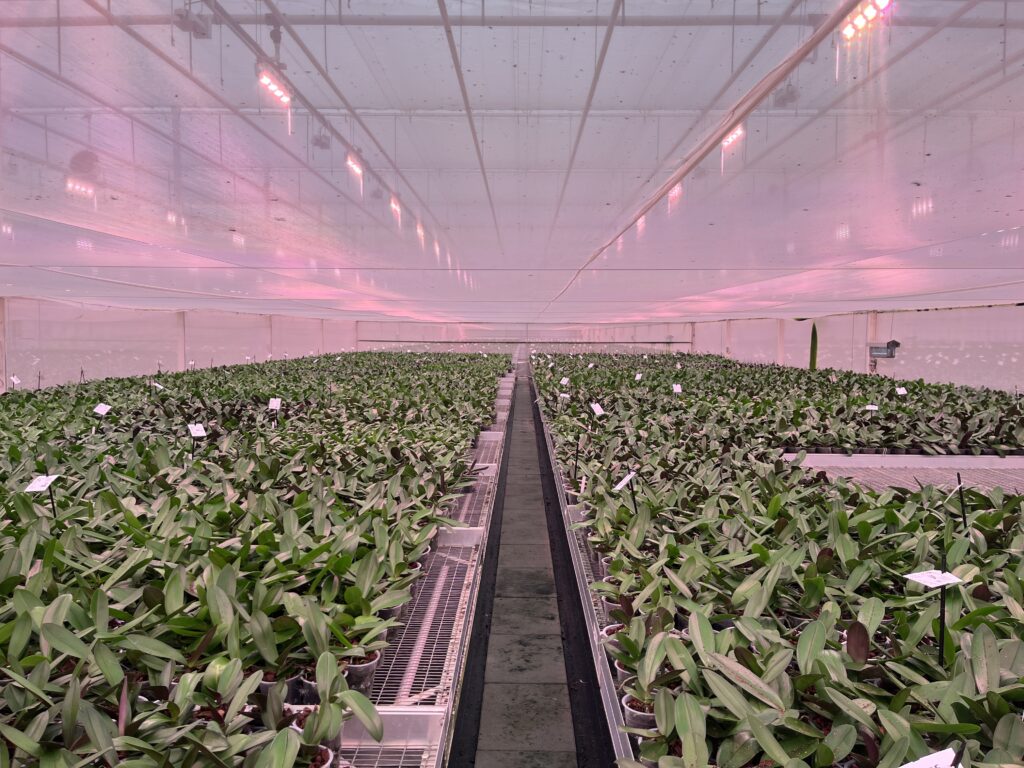
In the tent





